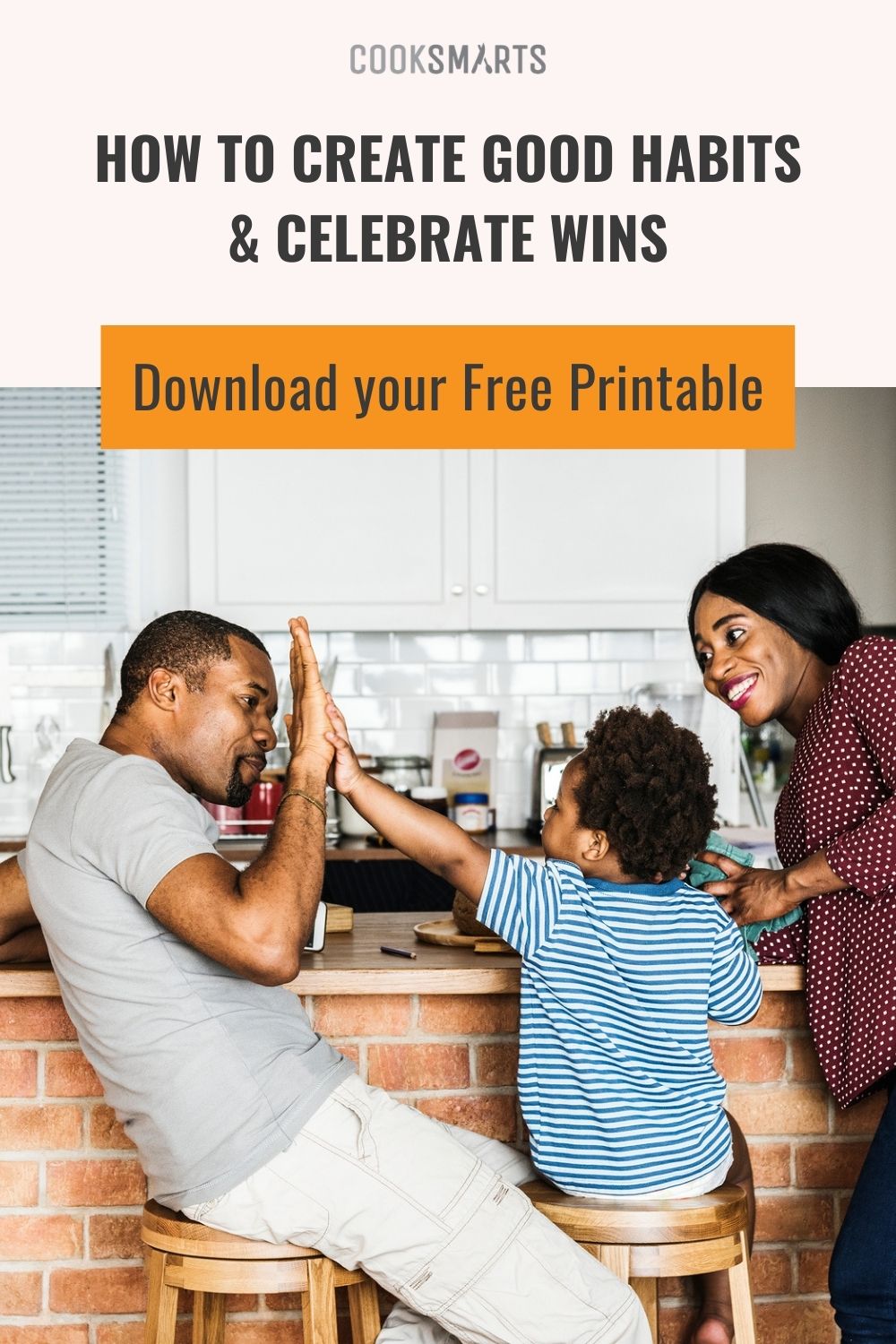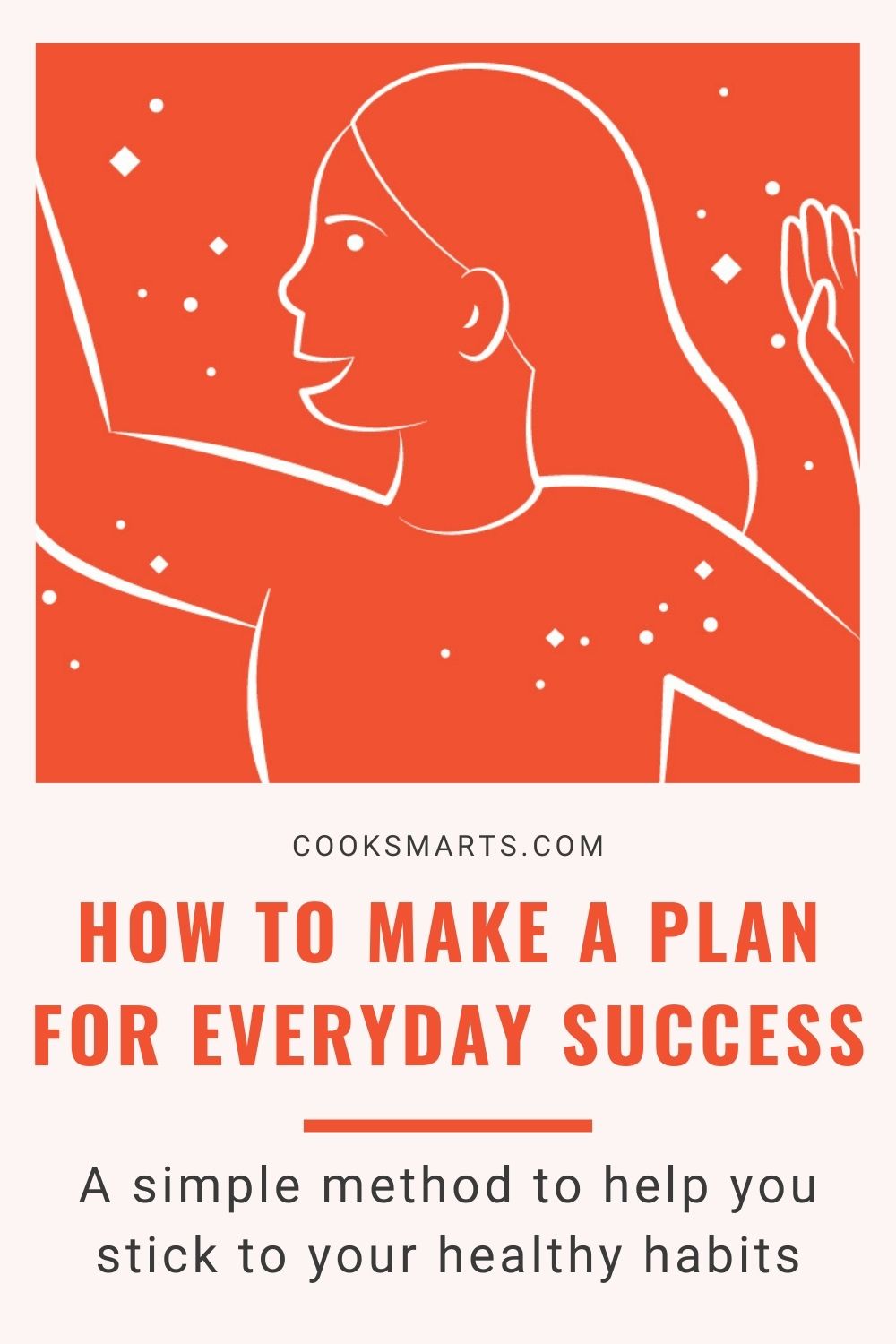The Recipe for Making Good Tiny Habits Is Easier Than You Think
Get ready for the next steps in creating a good tiny habits plan to help you transform 2021, and learn how to make the best behavior recipes for everyday success.
Welcome to Part III of our Tiny Habits series that is based on BJ Fogg’s Tiny Habits: The Small Changes That Change Everything. If you’re just joining in, start with our first 3 lessons:
- Introduction to Tiny Habits
- Part I: The Equation for Building Tiny Habits that Last
- Part II: The Key to Making Habits Easy
During the introductory step of our series, you identified the one aspiration that would most transform your 2021. In Part I, you created a swarm of behaviors that would support the change you want to make. And yesterday, I showed you how to focus on good tiny habits by mapping out your behavior swarm for impact and doability before taking the next tiny-fying step.
Today, I am going to walk you through how to transform those teeny, tiny actions into recipes for real-life action. (If you’re following along in Fogg’s book, we’re on Chapter 4.)
Even though we spent yesterday creating tiny versions of the golden behaviors that support the life change we want to make, we are still missing the prompts for these actions. Remember that Fogg’s equation for our behaviors is: B=MAP, which means Behaviors = Motivation to do behavior + Ability to do behavior + Prompt for doing behavior.
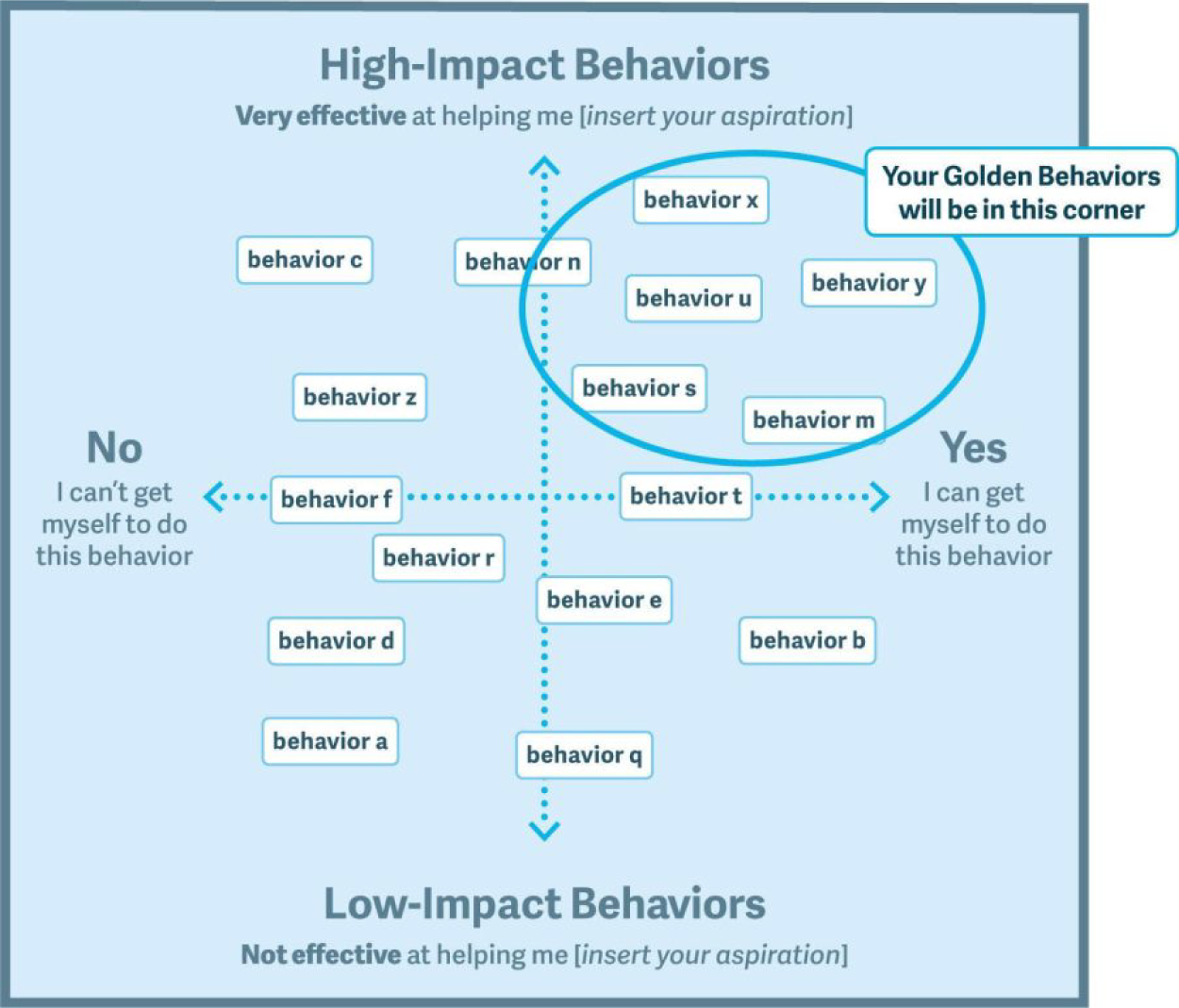
In tiny-fying our desired behaviors, we’ve increased our motivation and ability to do them, but we still need to know when to do our good tiny habits.
Recipe Making for Good Tiny Habits
Our days, whether we realize it or not, are filled with prompts. We have a moment of boredom (prompt). We are motivated to end the boredom, and our phones make it so easy to do so. We open up Instagram and, all of a sudden, we’ve lost 15 minutes of time that we can’t get back due to mindless scrolling (behavior).
I will confess that I just did the same thing for the last 5 minutes because I got stuck on what to write in this paragraph. At the first moment of writer’s block, my brain is unconsciously trained to reach for my phone (behavior).
But we can turn these same prompts into cues for performing the behaviors that help us reach our larger goals. I have been trying to reprogram myself that when I feel the prompt of boredom or writer’s block, instead of reaching for my phone, I’ll:
- Open up a cookbook if I’m at home. To make it easier to do so, I’ve put a stack of cookbooks on my dining table and hid my phone in a drawer so it’s easier to reach for a cookbook than find my phone.
- Stretch my neck and take 3 deep breaths if I’m at the office.
- Watch my kids play if I’m at the playground. To make this new action easier to do, I’ve been trying to leave my phone at home. Yes, it might mean I miss a few moments to capture on video but overall, I am so much more present.
As you can see, you can swap one behavior for another to create good tiny habits that you want to be spending time on. So, from now on, when I feel bored, I open up a cookbook, stretch and breathe, or watch my kids play (instead of looking at my phone).
The basic recipe template that Fogg gives is “After I _____, I will _____.” He suggests tying the first part of the recipe to an anchor moment to build a new habit. What is an anchor moment? It is something you already regularly do in your day so you don’t have to introduce new prompts.
The example he turns to over and over again is “After I pee, I will do 2 push-ups.” As you can see his first behavior has nothing to do with his second behavior. Peeing is simply something we all need to do multiple times a day, so it’s a good anchor moment to increase the frequency of a behavior you want to introduce.
Other anchor moments you might experience a few times throughout the day are:
- Getting into the car
- Feeling bored (the moment I’ve been working on)
- Filling up your water bottle
- Putting down your phone
- Finishing up a meal
- Washing the dishes
Fogg also lists dozens of more anchor moments that are a part of almost everyone’s morning, midday, and evening routines and also gives 300 different sample behavior recipes(!) in his book.
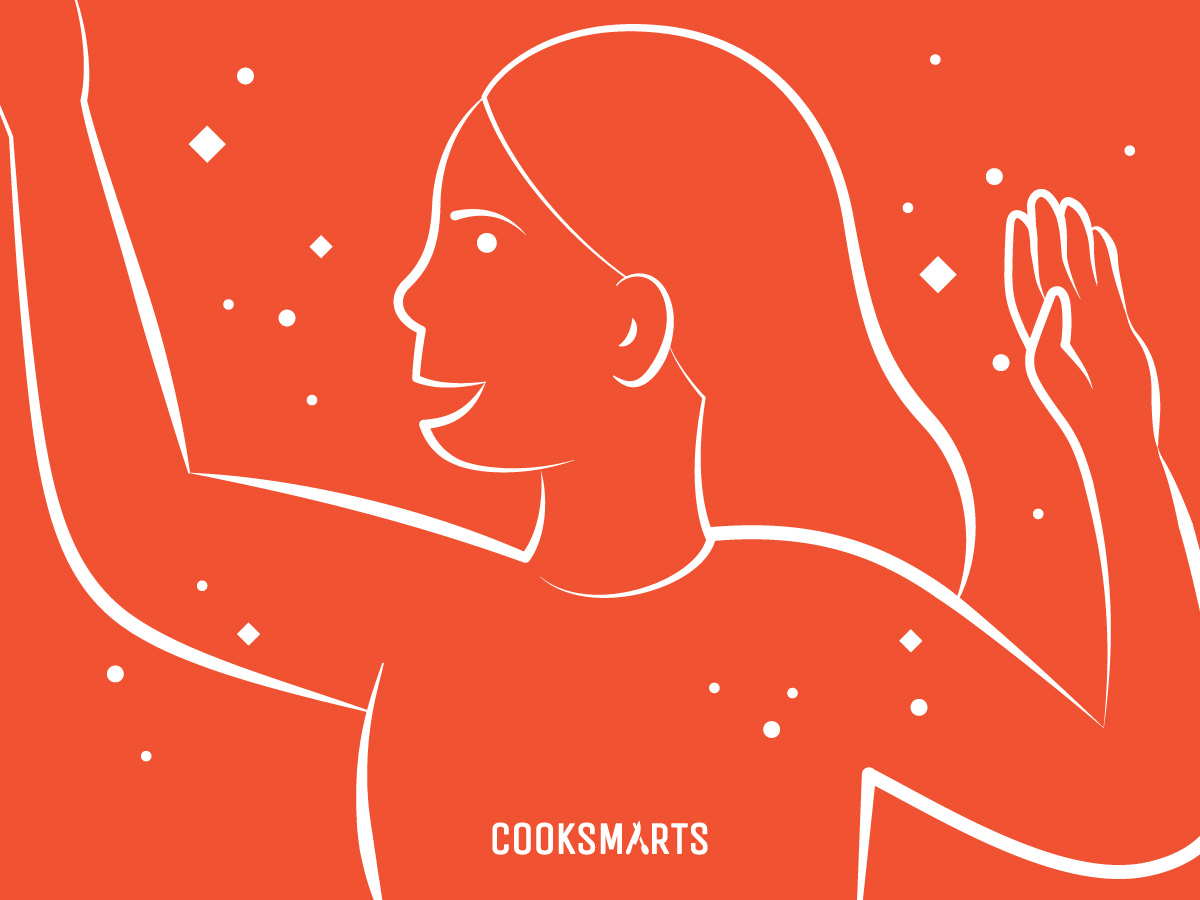
Feel Good with Little Celebrations
However, before you start recipe-making, there is 1 more piece to Fogg’s behavior recipe that is so important to making a habit stick (Chapter 5). This crucial piece of the equation is the reason I immediately took to this book and Fogg’s approach.
On the second page of his book, he states, “You change best by feeling good — not by feeling bad,” but so often our desire to change leads us to feeling bad about ourselves. We blame ourselves, we get angry at ourselves, we are disappointed in ourselves when our desire to change doesn’t lead to the change we want or we don’t see results fast enough. Instead of troubleshooting the process, we usually think our own weaknesses are the problem.
So to make yourself feel good about these good tiny habits you’re taking, the last part of the recipe is celebration. The full recipe is therefore, “After I _____, I will _____. To wire the habit into my brain, I will immediately _____.”
For many of us, celebration will be the hardest part of the recipe. We might feel self-conscious about it (even if no one is watching). We might feel that it’s cheesy to give yourself a high-five or that the tiny action of opening a cookbook or setting out a cutting board doesn’t deserve a celebratory response.
But remember, we change by feeling good, not by feeling bad, so pick any form of celebration you feel okay doing. Fogg’s Tiny Habits book lists many examples but here are a few that I’ve employed:
- Simply smile
- Picture my kids clapping for me
- Picture myself crowd surfing at a concert
So give yourself a thumbs up, clap your hands together, picture yourself accepting an award, literally pat yourself on the back — choose something and test it out. If it feels too awkward, try something else. The key is to start celebrating and creating recipes based off of the tiny behaviors you brainstormed last week.
Eventually, these habits will become wired in and also grow bigger, and you might find yourself wired to do them without celebration. But the celebration component is key to getting you habituated to these new actions, so don’t skip it when first adopting a new behavior recipe.
I promise it won’t be long till you have so many new changes to celebrate!
You can use this downloadable template here or sketch out your own using the example below.
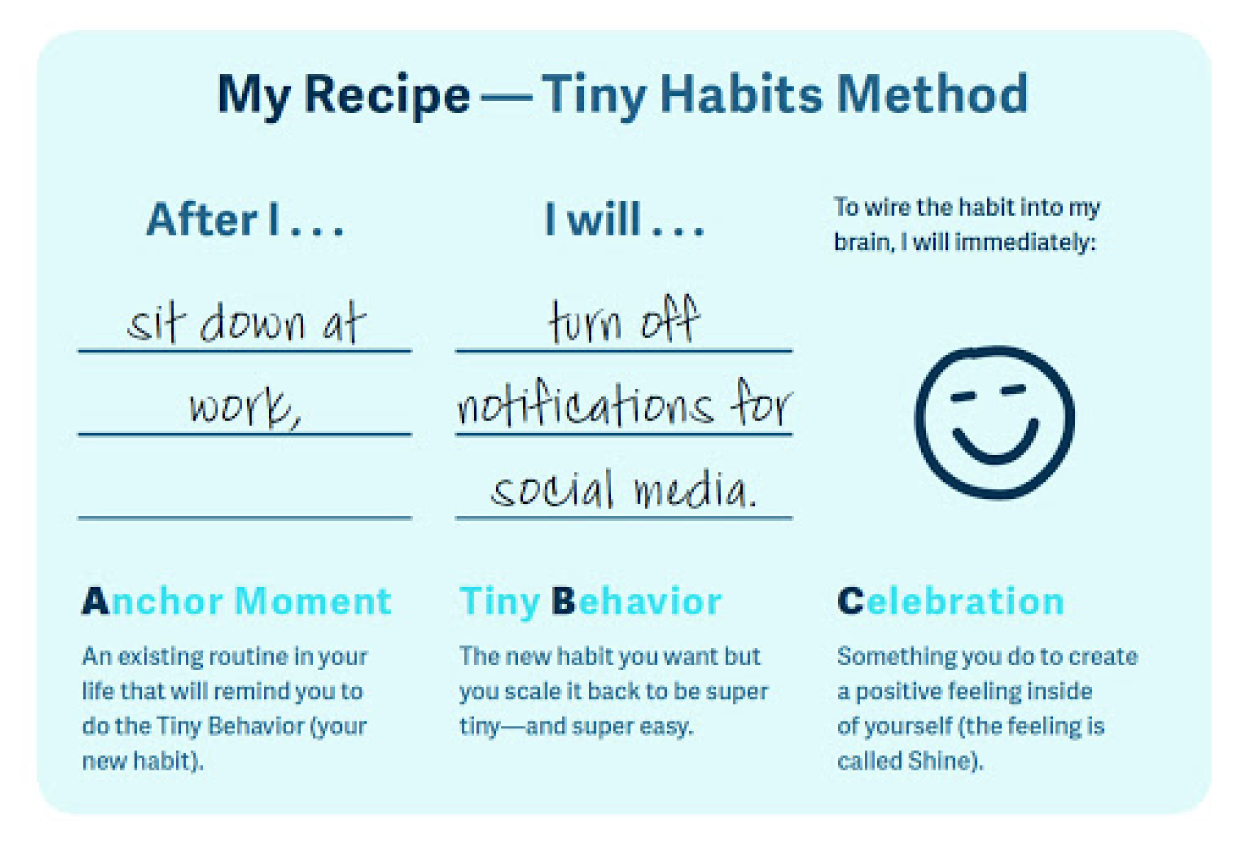
And of course to bring it back to cooking, meal prepping, and meal planning, here are a few that you might borrow based on the tiny behaviors I identified in Part II: The Key to Making Habits Easy.
-
After I put my dinner dishes in the dishwasher, I will check what I’m making for tomorrow’s dinner (eventually leading to prep one component of tomorrow’s dinner) and then picture myself eating my favorite meal.
-
After I make my grocery list, I will open my fridge (eventually leading to check which items I already have) and then do a little dance.
-
After I get home from work and wash my hands, I will put out the recipe I’m making tonight (eventually leading to cooking recipe) and then say, “Yay!”
-
After I finish eating lunch on Thursday, I will open up my calendar (eventually leading to schedule one meal) and then listen to my favorite song.
-
After I set down my groceries, I will pull out my salad spinner (eventually leading to washing one vegetable) and then picture a fridge full of prepped and organized vegetables.
Get the idea? Now go and create some recipes — good tiny habit recipes, specifically (you can leave the food recipes to us) — and start putting a few into action. Then come back for the final part of our Tiny Habits series tomorrow.
And, if you haven’t taken advantage of our New Years Sale through 2/2/21 yet, use code NEWHABITS to get 20% off of our meal plans!
Get other helpful cooking tips and resources like this by signing up for our newsletter below. We send out weekly emails that will help you improve in the kitchen and live a healthier life, so join our community today and start cooking smarter!

